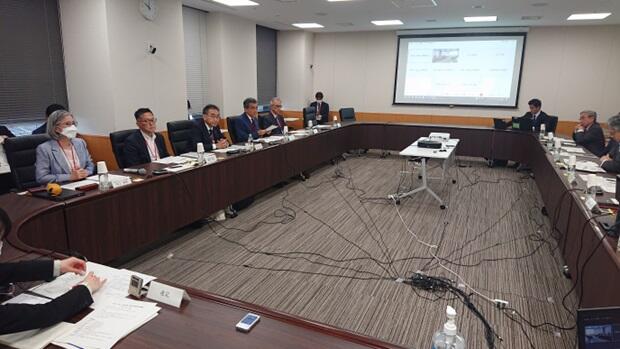Systemizing cell culture science as an academic discipline and fostering human resources capable of performing cell culture techniques are extremely important steps for advancing regenerative medicine and drug discovery research.
At a meeting of the Council for the Research and Development of Regenerative Medicine, Cell Medicine, and Gene Therapy held on June 2 (Chair: Hiroki Matsuo, Secretary-General for the Science, Technology and Innovation Promotion Secretariat), CEO Miho Furue of Cel-MiM called for the systematization of cell culture science as an academic discipline and the establishment of a national qualification scheme in cell culture. Furue worked at the National Institute of Biomedical Innovation and Nikon before founding Cel-MiM.
Furue launched a certification system of cell culturist at the Japanese Tissue Culture Association. She also developed a method for the quality control of human pluripotent stem cells (cells that can renew by themselves) and established Japan's first induced pluripotent stem (iPS) cell bank at the Japanese Collection of Research Bioresources (JCRB) Cell Bank. In other words, she is a cell culture professional.

A lack of places to learn
Although cell culture is an essential wet lab technique routinely used in the laboratories of various universities and companies, it has not been systematized as an academic discipline called cell culture science.
According to Furue, in order to achieve appreciable growth of cells, one needs to know how to select the necessary culture medium, evaluate growth factors, obtain and manage the cells, and detect bacterial infections and other problems. Additionally, such individual needs to be proficient in the knowledge about cell freezing, thawing, re-culturing, and sorting. Furthermore, observation skills and culturing techniques are important.
Observational skills are important to evaluate the condition of cells (based on a thorough knowledge of the work procedures), make appropriate judgments, and use pipettes, tubes, dishes, and plates suited to the state of the cells.
However, since most individuals learn through hands-on training during their school days or at research institutions, they do not always learn systematically, and some universities and vocational schools do not even offer cell culture training.
Although the Japanese Tissue Culture Association and the Tokyo Metropolitan Industrial Technology Research Center offer cell culture training, the number of students who can participate is limited. In other words, there are few places to learn. Additionally, the preparation of biological samples is time consuming and labor intensive, and there is a shortage of instructors. There are high expectations for academia; however, principal investigators, who are trainers, are typically busy with other tasks and do not have enough time to teach.
Difficulty in meeting demand
The recent expansion of the regenerative medicine market has increased the demand for various products, culture facilities, and contractual cell culture services for the mass production of cells.
Participants in the cell culture training courses offered by Cel-MiM come from diverse backgrounds. For example, some are from companies that develop laboratory automation equipment and produce liver cell culture supernatants, whereas others are from clinics launching new stem cell therapies.
Biotechnology (including the fields of regenerative medicine, cellular medicine, gene therapy, and drug discovery research) is used in a wide range of industries, contributing to societal problem solving and increasing product value. The demand for human resources in these fields is predicted to grow continuously in the future.
However, there is a shortage of human resources in the industry as a whole, and there is usually a waiting period of several months before a temporary employment agency can send a person with cell culture skills.
As Furue emphasized that the current qualifications granted by academic societies (i.e., cell culturist by the Japanese Tissue Culture Association, clinical culturist by the Japanese Society for Regenerative Medicine, embryologist for assisted reproductive medicine by the Japan Society for Ova Research (JSOR), and certified cell therapy manager by the Japanese Society of Transfusion Medicine and Cell Therapy (JSTMCT) ) should be certified as national qualifications that are similar to those awarded to laboratory technicians, nurses, dental hygienists, and other professionals.
Reliance on imported samples
In Europe and the U.S., regulations regarding various types of laboratory animals are being tightened in the wake of growing opposition against their use. The idea of using the biomimetic/microphysiological system (MPS) as an alternative to laboratory animals has attracted increased attention.
In the U.S., the National Institutes of Health (NIH) and other organizations are supporting the research and development of MPSs, and the Food and Drug Administration (FDA) no longer requires animal testing.
In Japan, organoids, mini organs, and microelectromechanical systems (MEMS)-based organs-on-a-chip are being developed as advanced tools to support drug discovery. However, the challenge is to build a system that can provide stable, high-quality cells.
In the U.S. and the U.K., cell and tissue supply systems have been established for regenerative medicine, basic research, and drug discovery research.
By contrast, aside from various cancer cell lines and disease iPS cells supplied by RIKEN and the JCRB Cell Bank, Japan relies on its imports for all primary cultured human cells for research purposes. All stem cells used by pharmaceutical companies for drug discovery research are estimated to be imported at a cost of approximately 100 million yen per company.
This is because the definition of commercial use is unclear, which necessitates individual inquiry about the extent of basic research and commercial use with respect to 'use for internal research,' 'use for internal product evaluation,' 'use for assays,' 'use for screening,' and so on. Establishing such an environment and rules is also important.
This article has been translated by JST with permission from The Science News Ltd. (https://sci-news.co.jp/). Unauthorized reproduction of the article and photographs is prohibited.




